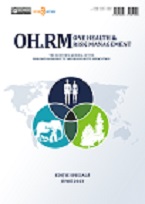Abstract
Introduction. The COVID-19 pandemic has become a major global health, political, and economic issue. Despite efforts to establish strong national registration and reporting systems in many countries, including international sources of information such as https://www.worldometers.info/coronavirus/ there are serious doubts about the completeness of the registration of cases of disease due to different reasons including the availability of health care, diagnostic criteria, seeking medical help depending on severity of cases, “family cases”, patient’s behavior, etc. In Armenia COVID-19 diagnosis based solely on the positive PCR test. The official number of COVID-19 cases in Armenia is about 450,000, with a rate of 151,000 per million population.
Aim. The aim of this study is to estimate the “true” incidence of COVID-19 based on self-reported data obtained during interviews of a random sample of population in randomly selected villages and towns in the regions of the Republic of Armenia.
Material and methods. This cross-sectional non-experimental quantitative research was conducted using a 15-item questionnaire as the primary tool. The study was conducted from January 1, 2021, to December 31, 2022, with a total of 1393 participants from 100 villages and 48 towns across the Republic of Armenia. To ensure the sensitivity of the topic was taken into account, the questionnaire was completed anonymously, and efforts were made to obtain honest responses from all participants. The statistical analysis was performed using SPSS 16.0.
Results. Of the total 1393 participants only 782 (56.1%) were tested for COVID-19, among those 38.5% tested positive, while 61.5% tested negative. Out of 518 respondents reported history of COVID-19 only 294 (57%) were PCR tested and had a positive result, while 224 (43%) were never tested and were not formally recognized as COVID-19 patients. The overwhelming majority of those who did not seek medical assistance had a mild (46.9%) to moderate (32.4%) course of the disease. The positive test rate was higher in the cities (40.7%) compared to villages (36.8%), but the difference was not statistically significant (p>0.05). Among test takers, 51% were from villages and 63.3% were from towns, with a statistically significant difference between the two settlements (χ2=18, p<0.0001). There were no significant gender differences neither in taking the PCR test for men (55.8%) and women (56.7%), nor in the prevalence of a positive test result: 38.1% of men and 38.8% of women tested positive, (p>0.01).
Conclusions. A significant proportion of cases of COVID-19 are underreported due to the low level of patients’ medical help seeking behavior. Mild condition of disease course, “family” cases, when one of the family members has already been diagnosed and got medical assistance, allows other members to “share” the treatment, prescribed medications, get treated while avoiding diagnosis related isolation and other restrictions. We did not find statistically significant differences between the prevalence of positive COVID-19 test results among participants residing in villages and towns in the RA. Participants living in the towns of Armenian regions reported taking more tests than those living in villages of the regions, indicating reliable statistical differences.
|
 Views: 94|
|
Views: 94|
|
This work is licensed under a Creative Commons Attribution 4.0 International License.

